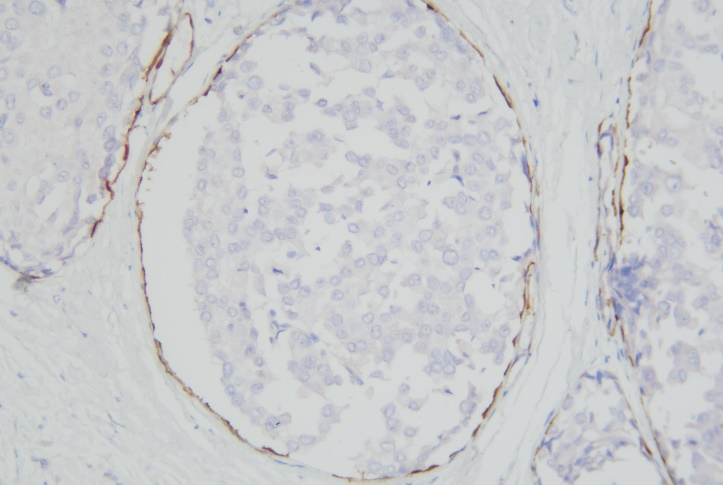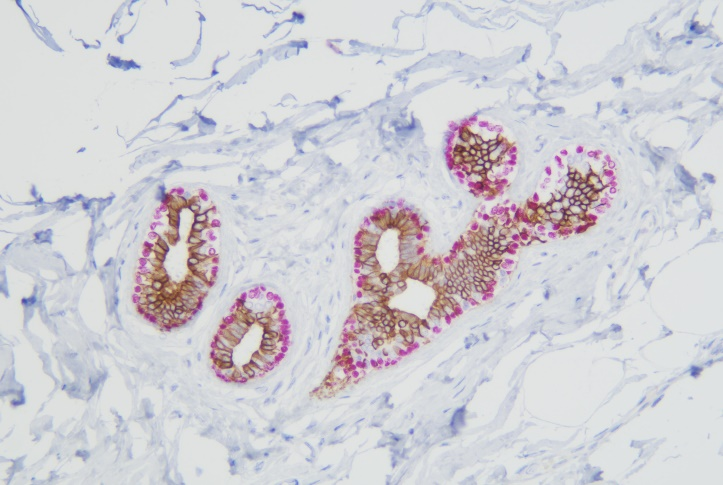 PRODUCT CATEGORY
PRODUCT CATEGORY
CONTACT US
CK5/6/p63 detection reagent (Immunohistochemical)
CK5/6/p63 detection reagent (Immunohistochemical) is mainly used to qualitatively identify CK5/6 and p63 proteins. Using immunohistochemical dual staining detection and multiple antibody combination technology, there are detected two antigen targets at the same time on the same sample tissue section by one staining process.
Specification
|
Model Number |
Specification |
|
SD8105 |
1mL/pcs; 3mL/pcs; 7/pcs |
This antibody is used with Immune Chromogenic Reagent (Dual Staining I) (SD8001)
Clone: C6H1/C1C8 + BP6038
More Info
CK5/6 is a kind of basal cell high molecular weight keratin. It is positive in squamous epithelium and ductal epithelial basal cells and some squamous epithelial germinal cells, myoepithelial cells, mesothelial cells, and glandular epithelial cells. Therefore, it can be used for the differential diagnosis of squamous cell carcinoma, mesothelioma, adenocarcinoma, ductal epithelial benign and malignant hyperplasia. CK5/6 shows strongly positive in most usual ductal hyperplasia (UDH) lesions of the breast, but significantly reduced in most ductal carcinoma in situ (DCIS) and atypical ductal hyperplasia (ADH) of the breast.
CK5/6 is a marker of mesothelioma. TTF-1 is almost not expressed in mesothelioma. Combined detection of the two markers can be used to differentially diagnose mesothelioma and lung adenocarcinoma. The combination of CK5/6 and TTF-1 antibody is used to detect most lung cancers, and only one target is positive. When the two antibodies are expressed together, it may be a sign of adenosquamous carcinoma. CK5/6/TTF-1 can help distinguish lung adenocarcinoma from lung squamous cell carcinoma.

Breast DCIS – p63 nucleus (negative) CK5/6-cytoplasm (brown)

Breast Duct – p63 nucleus (red) CK5/6-cytoplasm (brown)
Related Product














 Chat
Chat

 message
message

 Quote
Quote


